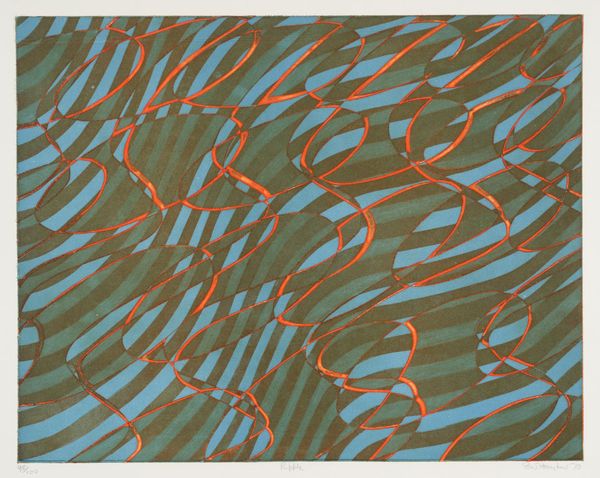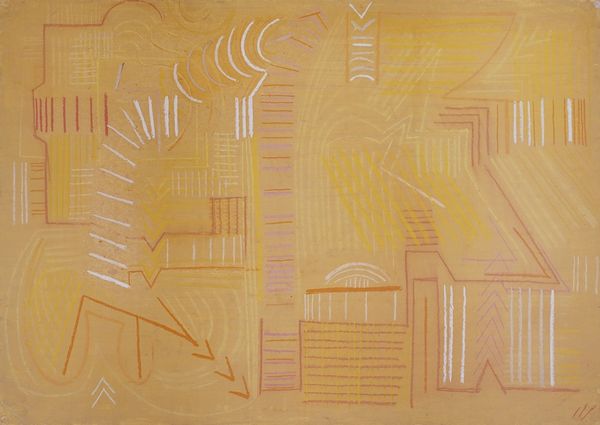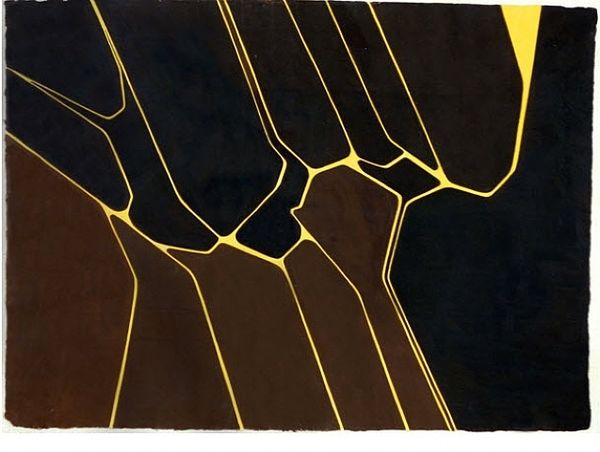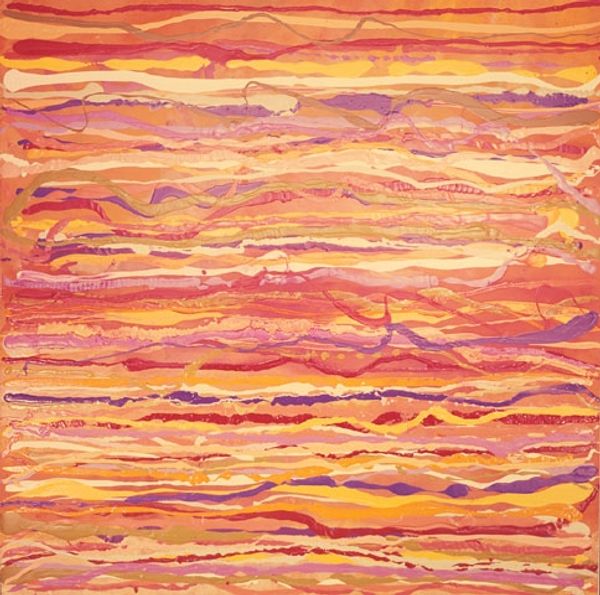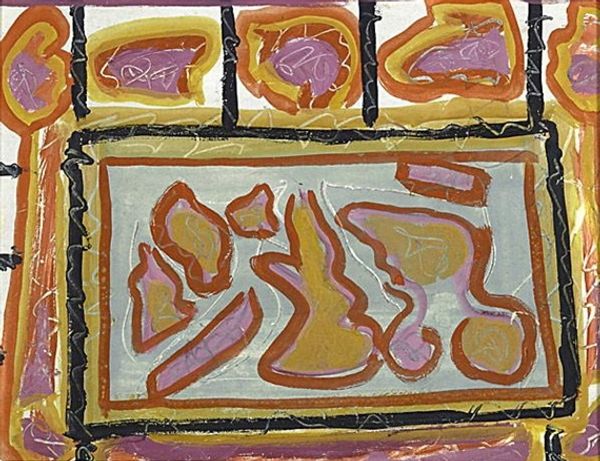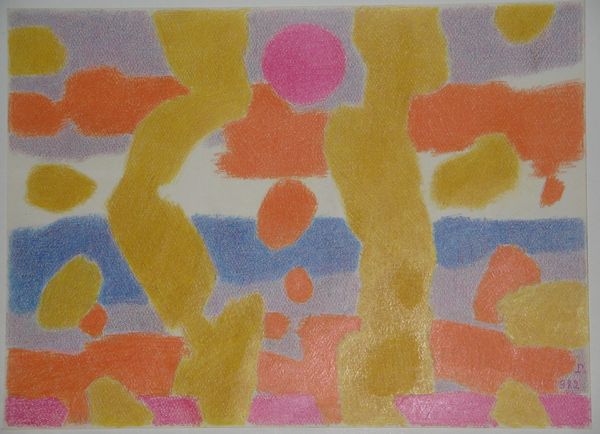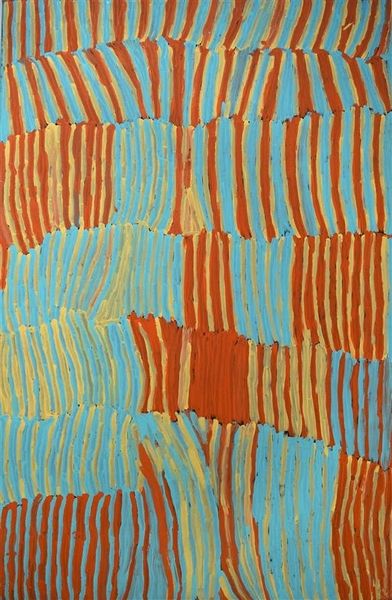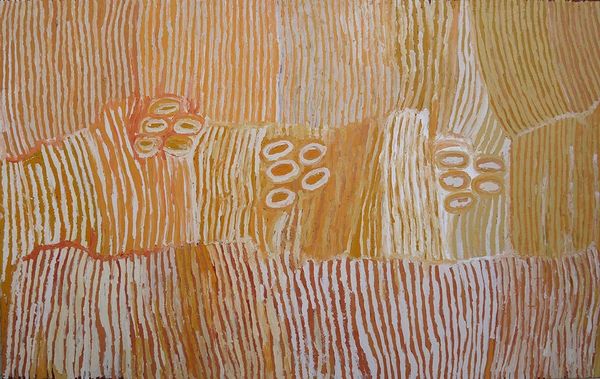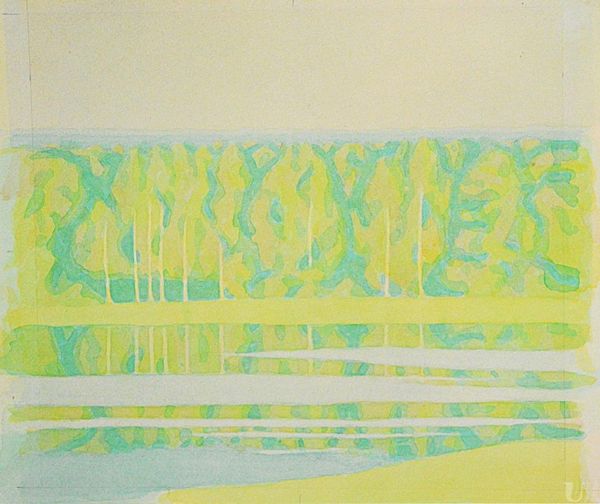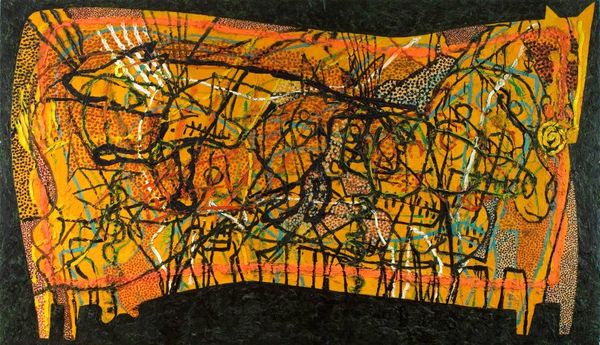
Copyright: Alfred Manessier,Fair Use
Curator: This piece before us, Alfred Manessier’s "Abstract Composition" from 1955, really exemplifies the postwar turn toward abstraction, particularly within the context of spiritual renewal. Editor: It’s surprisingly subdued. I find the ochre and muted rose rather soothing. Almost like gazing at stained glass. But those dense black shapes scattered throughout feel almost...disruptive. Curator: Indeed. Manessier's use of ink and those seemingly scattered geometric shapes belie a deeper exploration of structure. Consider his background; his Catholic faith infused his art, a quiet resistance to dominant political discourses of his time. This composition hints at order attempting to emerge from chaos. It speaks to an underlying search for meaning amidst cultural fragmentation. Editor: Right. It's not just random application; the density seems intentional. Considering the materiality, the way ink interacts with the paper, must have offered the artist both control and surrender. And those stark contrasts challenge any simple reading of peace. I mean, those black chunks seem to actively block any fluidity across the piece. Curator: The placement of each element then acquires a sort of defiant quality when we contextualize this during the Cold War era. Remember, abstract art wasn't seen as "neutral"; its departure from figuration often met ideological critique, becoming implicitly political. The lack of recognizable form became its strength – resisting propagandistic representation. Editor: And thinking about production, how many proofs were pulled, discarded? There is a real intimacy and intensity embedded in the creation itself, isn't there? And I wonder what specific grade of paper he chose, to support the inking in the way we see. Curator: Absolutely. Every material decision would have contributed to the final expression, imbuing this image with layers of intellectual and social weight. Editor: Yes. So, beyond the surface appeal, Manessier engages, on close observation, with deep artistic intention and social resonance through this piece. Curator: Precisely. It encourages viewers to engage not only aesthetically, but critically, with the narratives and social context shaping its creation. Editor: It becomes more complex the more you reflect upon its components and background!
Comments
No comments
Be the first to comment and join the conversation on the ultimate creative platform.
